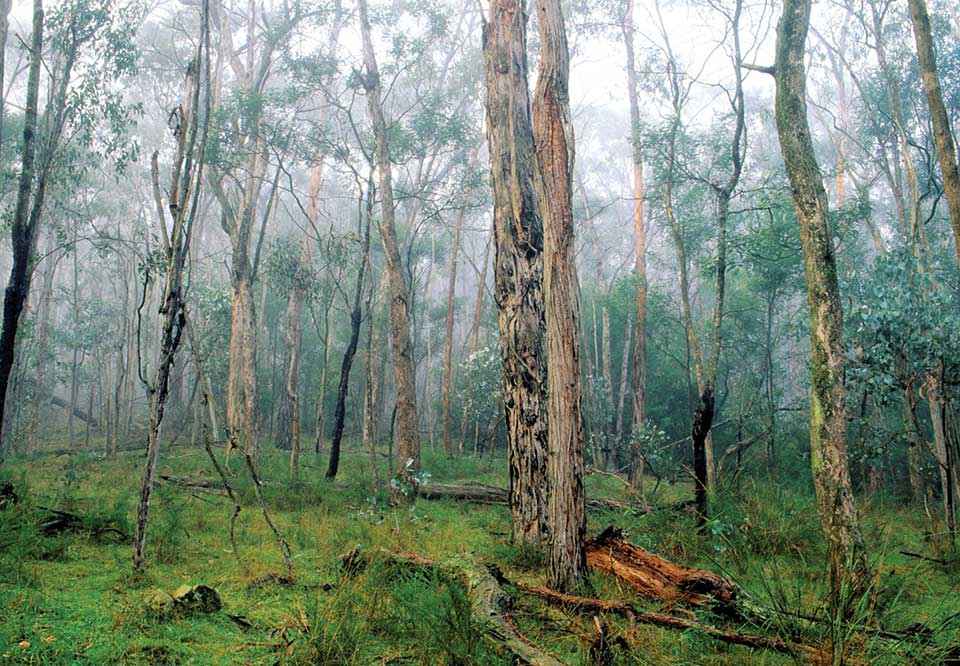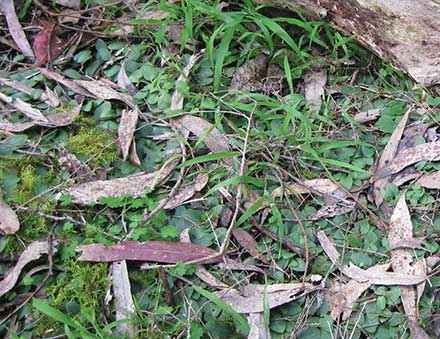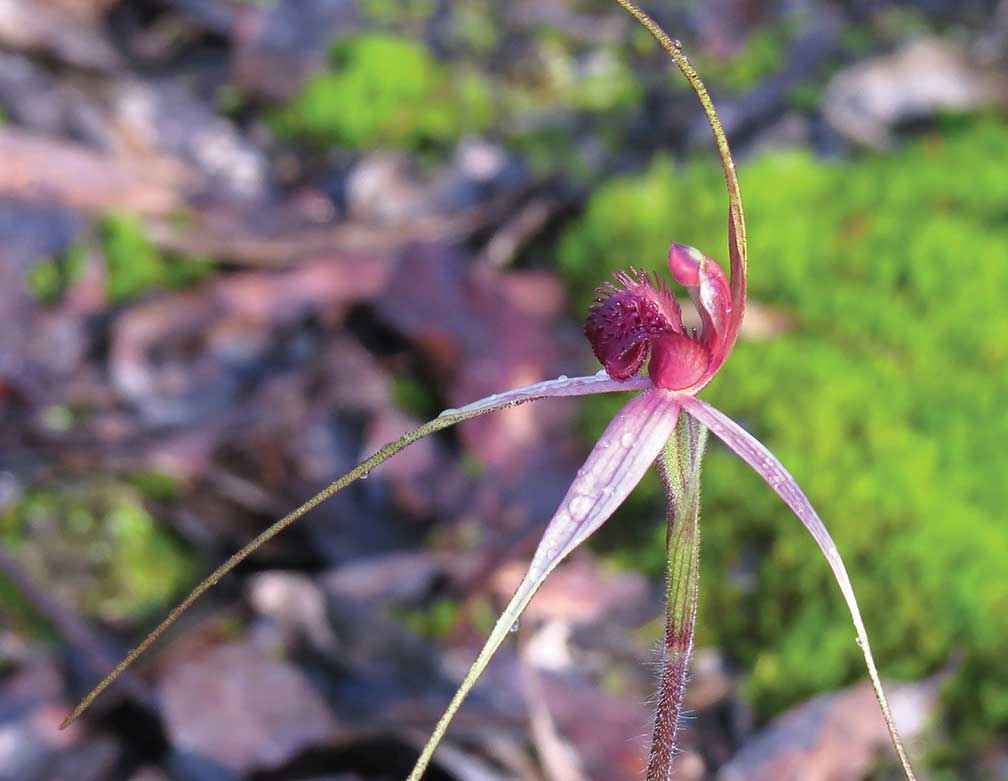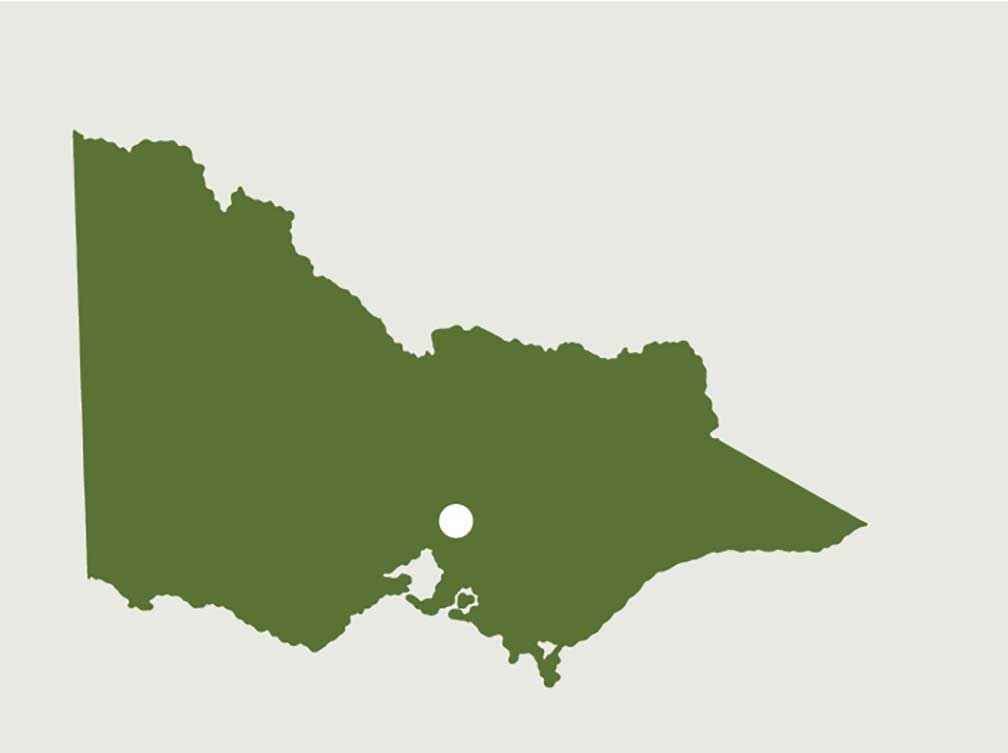Victorian Landcare Magazine - Winter 2021, Issue 81

Round the Bend Conservation Co-operative was established in 1971 by a group of residents who live on a 132-hectare property at the Bend of Islands, north east of Melbourne.
We are interested in preserving the natural environment through residential conservation, which aims to reduce and contain the impact of our living in the bush.
Over the co-op’s 50 years we have tackled many threats to the native bush. In 2012 we decided to take a more strategic approach and engaged an expert ecologist, Dylan Osler, to assess the state of the flora on the property and recommend a strategy to best protect and enhance biodiversity. Dylan’s report identified a new lurking problem. The perennial grass weed, Ehrharta erecta, also known as panic veldt grass, was the biggest single threat to the local environment.

Above: An example of Ehrharta erecta invading a patch of orchids.
Ehrharta, a native of South Africa and Yemen, is believed to have been introduced to Victoria in birdseed in 1950. It is now widespread across Victoria.
According to Dylan, Ehrharta is a particularly invasive weed that is notoriously difficult to control.
“It can seed every six weeks throughout the year and can tolerate a wide range of conditions, from dry to wet. It has the potential to displace a whole range of different species, like orchids, small daisies and annuals and has the capacity to completely take over the ground cover,” Dylan said.
Given that the weed was spreading from our house sites and starting to advance into the bush we knew we needed to act.
Our first challenge was to identify the extent of the problem. We found that the weed was mostly emanating from garden beds, effluent disposal systems and areas of stormwater runoff.
Each house site was divided into zones. We created a scale from zero to five to define the level of infestation at each zone. A score of one indicated 15 or fewer mostly small plants, or less than 5 per cent coverage. A score of four indicated more than 100 well-established plants with 25-50 per cent coverage. Fortunately none of our sites scored a five – a severe infestation with greater than 50 per cent coverage.
We then developed a control plan and timeline for each site. Our goal was to have most sites at a score of zero and no sites with a score above one by the end of the five-year project.
The control method was hand pulling. As Ehrharta can be confused with a range of native grasses, especially Microleana stipoides, our next challenge was to find a practical identification method that could be easily used by all residents.
After much research our project coordinator, Frank Pierce, discovered that when peeling a leaf away from the stem Ehrharta has a shield (a membranous ligule) present, while native grasses do not.
According to Frank this was a big breakthrough.
“Identifying Ehrhata was a challenge – it looked just like any other grass. But soon I could identify it with some confidence,” Frank said.
In fact our biggest challenge was making sure we got all residents on board with such a long-term program of weeding.
Hand-pulling a grass like Ehrharta is tough going, but the project would have failed if everyone didn’t participate.
A lot of work went into communicating with residents about the aims and importance of the project. The detailed documenting of progress at each site was also important because we could see that we were making a difference over time.

Above: The wine-lipped spider orchid is making a comeback on the co-op.
Bringing in a consultant to periodically advise, support and encourage each resident on site gave the project a big boost. Even residents who were unable to physically do the work saw the importance of the project and engaged someone to do the weeding for them.
We met our five-year target in September 2020. Consistent follow-up monitoring will be required to stop any outbreaks and we’ll use a consultant to conduct an annual check of sites every September as a safety net.
This project has taught us the value of having guidance from an ecological expert – especially in assisting and encouraging us to keep going over such a long period of time.
According to resident Richard Laurie, the sense of achievement felt by others was contagious.
“To end the project with such a positive result demonstrates just what can be achieved when everyone plays their part,” Richard said.
Most importantly, the project has demonstrated that by working strategically and co-operatively we could successfully tackle a weed that many people thought was impossible to control. This seems a fitting achievement to celebrate in our 50th anniversary year.
Karyn Kamminga is secretary of Round the Bend Conservation Co-operative.
For more information go to www.roundthebend.org.au

Above: Location map - Bend of Islands